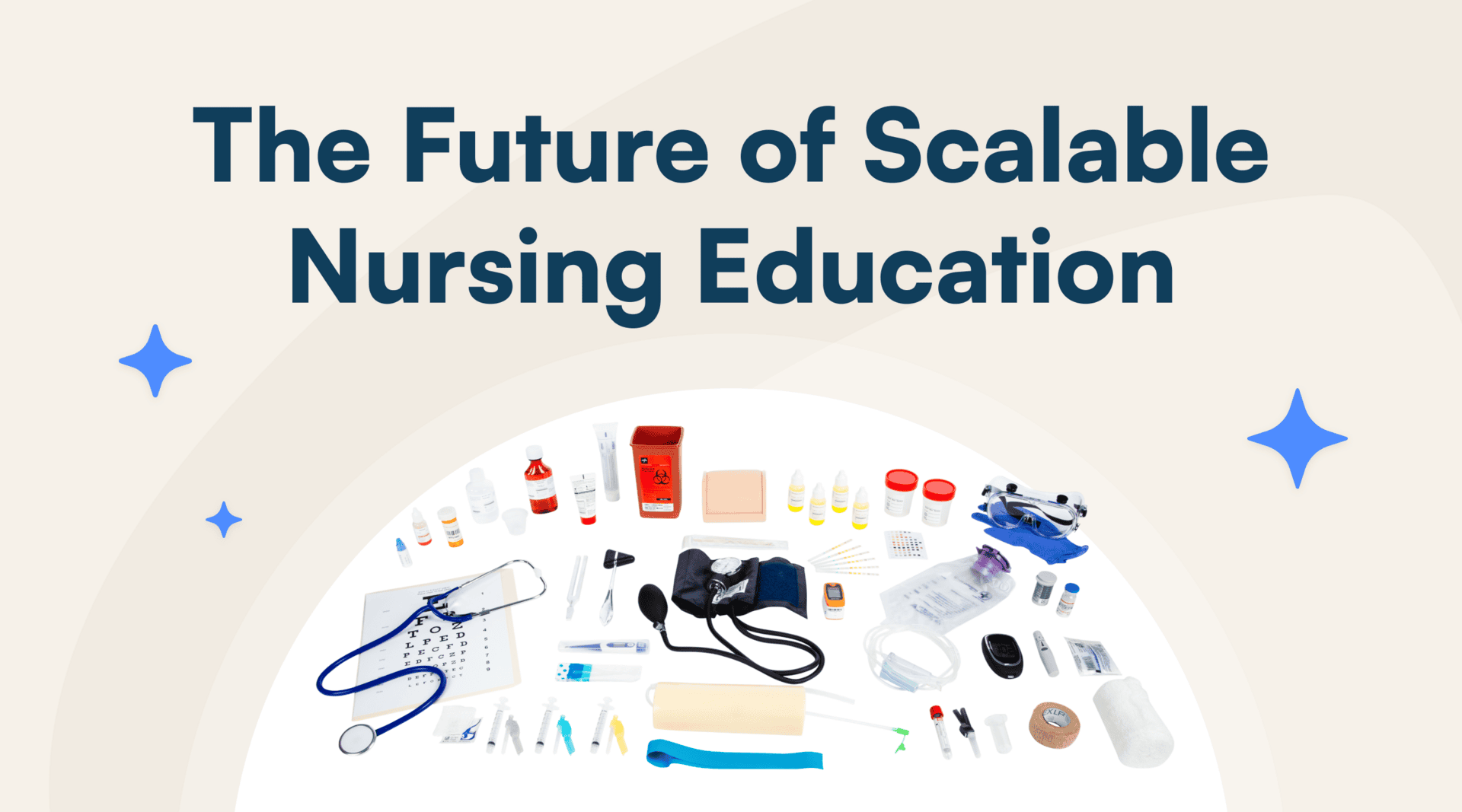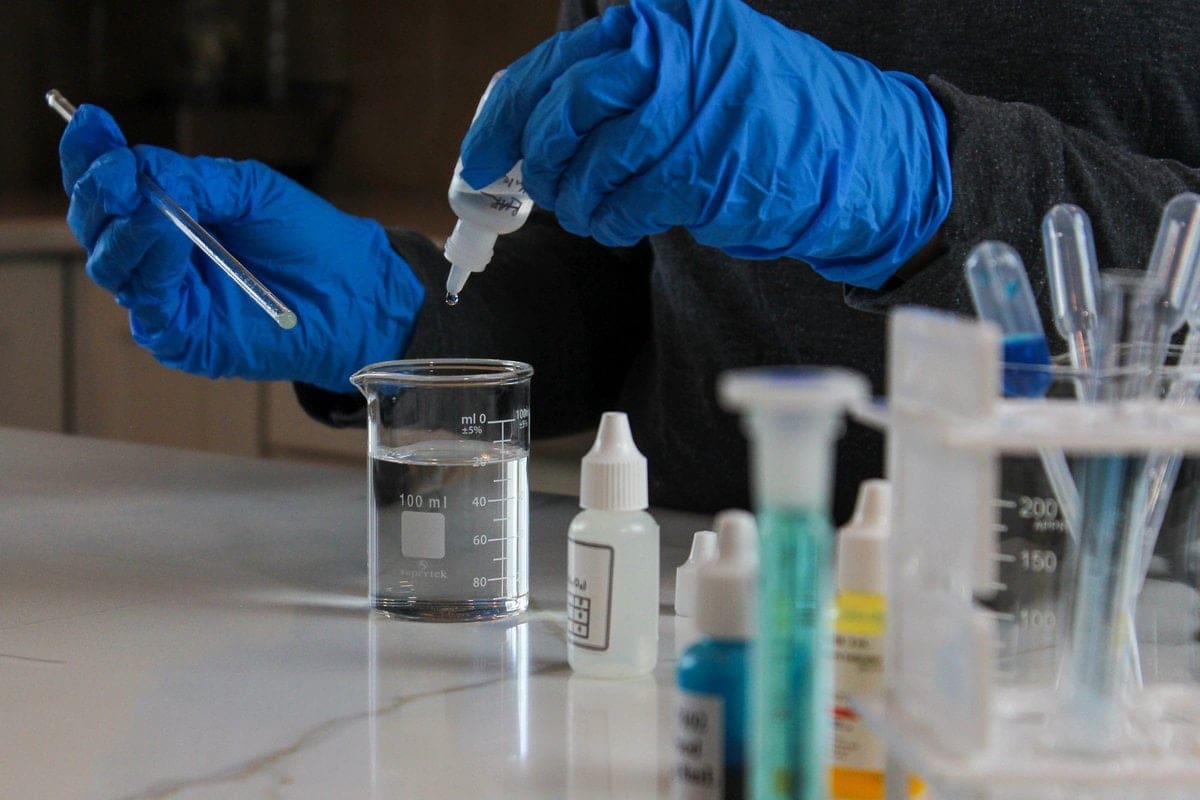Experiments, outcomes, science lab safety…you name it, teaching science in an online environment has always been challenging. So much so that almost no science degree programs existed in a purely online format up to just a few years ago. Most scientists couldn’t fathom teaching science without the hands-on lab experience that they had when they went to college. However, new technologies and a more complete understanding of outcomes-based teaching allow a new generation of scientists to be trained in an online format, which includes both virtual and hands-on experimentation, with the same or — in some cases — better effectiveness than traditional programs.
In fact, a meta-analysis of 86 studies, 89% showed that achievement of student learning outcomes was equal to, or greater, for non-traditional (online) labs (Brinson, 2014, Brinson and Brinson, 2014). So while the short answer is, yes, online science programs with hands-on labs can be very effective, many still question these programs’ science lab safety.
At-Home Hands-On Lab Kits Should Prioritize Safety
For that reason, Science Interactive’s hands-on lab kits prioritize student safety. Every experiment in the lesson library follows step-by-step instructions designed by PhD scientists to reduce risk. All kits include the proper lab equipment, PPE, and small-scale chemicals that are safe to use at home. Plus, we limit toxicity with biological chemicals as much as possible by offering formalin-free materials and non-virulent microbes.
Before any students can begin their virtual science experiments, they must first complete a lab safety lesson. This covers all of the precautions required during any experiment, like:
- Wearing personal protective equipment
- Preparing a lab space
- Handling lab equipment and chemicals
- Emergency protocols
From carefully controlled amounts of materials to the mandatory lab safety training, our labs replicate the rigorous safety requirements of on-campus labs – for online students. But because the instructor cannot be physically present when each student conducts a lab experiment, the kits are designed specifically to support students through each step of an experiment and — at the same time — give every student the chance to experience a real-world lab.
But just because the kits are architected with at-home science lab safety in mind doesn’t mean incidents can’t happen. In fact, a common concern of at-home science labs, sometimes dubbed kitchen science, deals with liability. If a student is injured while performing an experiment, who holds responsibility? In general, this is why Science Interactive’s kits are designed to pre-empt such issues, and manufacturers assume that liability from the university.
That said, safety will always be priority, and that’s why we asked one of our very own on-staff scientists for her input. Dr. Yu earned her PhD in organic chemistry from the University of Wisconsin, Milwaukee. She has a strong background in pedagogy and over a decade of experience teaching students from sixth grade through graduate school, which made her the perfect candidate for us to ask: What are your top science lab safety tips for students taking hands-on science courses from home?
Science Lab Safety Tip 1: Examine Your Space Carefully
According to Dr. Yu, the hazards of conducting an experiment at home are much the same as those of an experiment in an on-campus laboratory.
Unlike an on-campus laboratory though, our homes weren’t designed for this type of activity, and as a result, will require extra mindfulness from us to ensure science lab safety, including the following quick tips:
- Laboratories come equipped with sinks. If possible, consider setting up your experiment, in a spacious enough room that also has a sink, like a kitchen. In this case, you’ll actually be doing some kitchen science — in a good way!
- Review access to your space to ensure children, pets, and anyone else in the home cannot easily disrupt the space or access kit materials.
- If any of your experiments require use of a burner, make sure your surfaces are protected. It’s better to take five extra minutes to make sure you’re not setting up on a wooden tabletop than to discover scorched marks later on or that you were using fire around flammable materials!
Science Lab Safety Tip 2: Ventilation
In addition to making sure your space is safe, never overlook ventilation. In a classroom lab, ventilation controls are intended to minimize exposure to hazardous chemicals by removing air contaminants from the work site. There are two main types of ventilation controls:
- General (Dilution) Exhaust: a room or building-wide system that brings in air from outside and ventilates within. Laboratory air must be continually replaced, preventing the increase of air concentration of toxic substances.
- Local Exhaust: a ventilated, enclosed workspace intended to capture, contain, and exhaust harmful or dangerous fumes, vapors, and matter generated by procedures conducted with hazardous chemicals. These may include fume hoods and biological safety cabinets.
While it’s not feasible to install lab-grade ventilation systems simply for an online science lab, you can use bathroom, laundry or mudroom, and ceiling fans on low, as well as open windows to provide a constant pull of air. It’s good to have uninterrupted airflow, as anything blocking the airflow or creating stagnation in your home could cause damage or affect your health. Just be sure the flow is consistent — unexpected gusts of air could blow particles or fan flames.
At the end of the day, proper ventilation helps your home rid itself of moisture, smoke, orders, and indoor pollutants.
Science Lab Safety Tip 3: Glassware
Broken glassware and other sharp materials can be physical hazards in campus and home labs alike. But sometimes, damaged glass can be hard to spot, think hairline fractures. Those cracks can leak chemicals. And whenever glass is heated, it expands — which can exacerbate those imperfections and lead to glassware shattering in the middle of an experiment.
Obviously, the most likely person to be injured is the user. However, anyone in the vicinity of imploding glass is likely to be hurt, so it is important for everyone to wear their personal protective equipment (PPE).
Specialized glassware, including Schlenk line tubes, separatory funnels, vials, desiccators, autoclavable tubing/glassware, micro-fabrication and thin film deposition devices, and laser optics can be prone to breakage from hairline cracks. Wear slip-resistant or cut-resistant gloves when handling glass to prevent cuts, abrasions, and skin puncture — and always examine your glassware closely before using.
Science Lab Safety Tip 4: Dress for Success
In addition to wearing the personal protective equipment provided in your hands-on lab kit, make sure any long hair is pinned back or secured. Avoid bagging articles of clothing, like bell sleeves, scarves, or draping jewelry. Items like this can easily slip into solutions, causing contamination of the experiment, damaged clothing, and additional spills. Here’s short list of must-do’s when it comes to clothing for science lab safety:
- Hair must be kept away from the eyes, so it does not impede vision, come into contact with the work, or open flames. Long hair is also a hazard around rotating equipment and open flames such as Bunsen burners or alcohol.
- Avoid neckwear such as ties and scarves which may come in contact with chemicals, biologicals, or open flames. These also are a hazard around rotating equipment.
- Remove baseball caps and other headgear if possible, but if not, keep them far enough back on the head so that vision is not impaired and they do not interfere with protective eyewear.
- Avoid using electronic devices with headphones because they can often distract, and laboratorians must be aware of their surroundings at all times which includes being able to hear alarms.
- Consider light layers of clothing. Layered clothing, as long as it doesn’t impede your range of motion, provides an extra layer of protection against spills and splashes. Long sleeves and pants, as well as clothing that covers as much skin as possible is best for protection against those spills and splashes.
- Finally, only wear completely enclosed shoes, preferably of a material that can be wiped clean. Sandals, open toe, open back, or open weave shoes, shoes with holes, and even cloth or thin canvas shoes can absorb dropped chemicals or hot liquids which can be harmful.
It’s true. Much of the world is digital. But at the end of the day, while much can be done in the virtual online world, there will always be some limitations. Online science is no longer one of them. Hands-on components to online science lab courses have become essential. These kits balance standards-based effectiveness with cost, disposal, and most importantly, science lab safety — while still giving students the opportunity to really feel the fragility of a graduated cylinder, examine the crystal structure of a granite sample, or dissect the intricacy of a frog’s digestive tract — experiences they might not otherwise have.
So if you’re teaching science labs online, and want to be sure safety remains a top priority while still providing students with hands-on, real-world lab experience, we can help.
Discover more articles

Science Interactive Launches New Nursing Fundamentals

What Clinical-Ready Actually Looks Like (And How to Get There Sooner)


